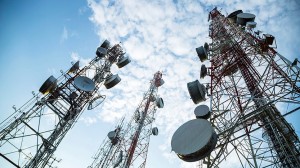Germany names bidders for 700MHz as EBU sees signs of support from EC
 The German Federal Network Agency, the Bundernetzagentur, has revealed that three companies will take part in the bidding for mobile broadband spectrum due to kick off on May 27.
The German Federal Network Agency, the Bundernetzagentur, has revealed that three companies will take part in the bidding for mobile broadband spectrum due to kick off on May 27.
Telefónica Deutschland, Telekom Deutschland – the domestic arm of Deutsche Telekom – and Vodafone will take part in the auction, which will see 270MHz of spectrum put up for grabs, including from the 700MHz range.
The Agency said that the 700MHz spectrum would be freed up by migration of digital broadcasting to DVB-T2 modulation and that the UHF spectrum freed up would enable blanket coverage of the country’s population. Bidders will have to commit to making services available to 98% of the German population.
Spectrum is also being made available in the 900MHz, 1500MHz and 1800MHz frequency bands.
Separately, the European Broadcasting Union EBU has noted “positive signs of support” from the second public workshop organised by the European Commission (EC) and the European Conference of Postal and Telecommunications Administrations (CEPT) as part of European preparations for the ITU WRC-15 in November. The EBU has lobbied strongly for protection of the UHF band for digital-terrestrial broadcasting.
“The European Commission was really engaged. They voiced support for no change to the 470 to 694 MHz band and stated it should be retained for broadcasting. Given the political implications of the use of this band, this support would provide long-term certainty of spectrum access for DTT in order to facilitate investment and the future viability of the terrestrial broadcasting platform,” said EBU senior project manager Elena Puigrefagut.
“The EBU was also pleased with the EC commitment to keep the higher part of the C-Band, from 3.8 to 4.2 GHz, for the fixed satellite service. The complete C-Band from 3.4 to 4.2 MHz is currently used by broadcasters for programme contribution and distribution (including the backbone for DTT networks), nationally, regionally and globally. Given that the EC decision C (2014)2798 harmonises the use of the lower part of the C-Band, from 3.4 to 3.8 GHz, for wireless broadband services, the remaining spectrum from 3.8 to 4.2 GHz is even more important to broadcasters. In the EBU’s view “The EC and CEPT positions are well-aligned and we saw commitment in Europe to the final position as the preparatory work for the WRC-15 in November is brought together.”



